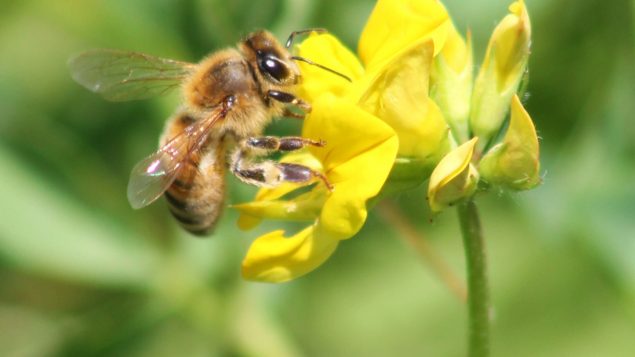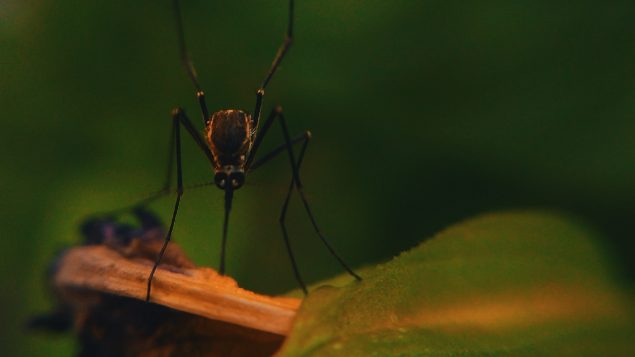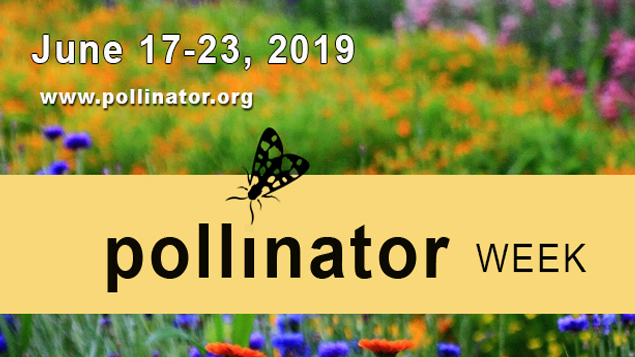This week is Pollinator Week in Canada but also in the rest of the world. The celebration has been going on for more than 10 years now and it aims at focusing everyone’s attention on the important role that pollinators play in our lives and in our environment.
It also aims at spreading the word about what we can do to protect those animals.
To understand exactly what pollinator week is, we spoke to Vicki Wojcik, Director of Pollinator Partnership Canada.

Bees are not the only pollinators. (Anthony Colangelo/Pollinator Partnership)
What’s pollinator week?
This celebration officially started twelve years ago with the U.S. Senate’s unanimous approval and designation of a week in June as “National Pollinator Week”.
But it quickly gained momentum. Soon it included public activities and initiatives from across North America because pollinators do not have political boundaries, as Wojcik explains:
Today, the celebration even crossed oceans. For the 2019 edition, events are being organised in Bermuda, China, Europe and Africa, for example.
But most of them are still held in North America. This initiative within the non-profit sector is widely considered a model in Asia, Africa and Asia.
All events are on an interactive map. Take a look to see if anything is happening near you in the next few days.
For example, the director of Pollinator Partnership Canada talks about pollinator and bee safaris at the Edmonton Valley Zoo, in Toronto or at the Memorial University of Newfoundland Botanical Garden.
A “bee safari” is a pollinator identification walk where a biologist or a scientist takes a group of people for a walk in a botanical garden or somewhere else and they identify bees.
Did you know it’s pollinator week? The Edmonton Valley Zoo is home to two honeybee hives as well as several bee hotels…
Posted by Edmonton Valley Zoo on Monday, June 17, 2019
Among the events, there are many gardening associations and groups across the country that have also opened garden tours as well as native plants planting days and this year’s edition has a special aspect to it as Wojcik explains.
Everyone can host its own event by registering it to the pollinator.ca or pollinator.org.
Pollinators can be bees but also bats or mosquitoes
When we think of pollinators, we usually think of bees, but many animals act as pollenizers. The Director of Pollinator Partnership Canada defines pollinators.
The importance of these animals is such that if they disappear, almost all of the plants that we see in our landscape would disappear overtime.
If we look at the different pollinators, bees are ranked first for a variety of reasons. “One of which is that they’re quite hairy and they grab a lot of pollen. It sticks to them very well and they do the best job moving it”, explains Wojcik.

- Even Mosquitoes are pollinators. (Jazeel Jaz/Unsplash)
Other than bees, the majority of pollinators are insects like flies, butterflies, moths, beetles and even … mosquitoes!
“Even though the other half of their life cycle includes feeding out of us, they do help some plants to reproduce,” says Wojcik laughing.
Pollinators also include vertebrates such as hummingbirds and bats. However, there are no pollinating bat species in Canada, as they are limited to the southern United States and Mexico.
Pollinators need your help
Pollinator Week is also about educating people on how to help preserve these animals.
One of the biggest challenges they face is a lack of quality habitat.
The best way to help pollinators is to create a habitat yourself in your own garden or in a community’s one. The best habitat is local native plants such as wildflowers.
If you don’t have access to a garden, you can simply support farmers who work in a pollinator sustainable way. They are usually mindful of their use of pesticides, and they also manage their landscape to include additional plants.
Finally, you can support actions creating more habitat or organisation making efforts for pollinators.
Risks to pollinators
In terms of mortality, pesticides have a direct link with pollinators, but the main question is not what kills them, explains Wojcik.
Pesticides used in general, for example, do not always kill pollinators but have an impact on their health. They cannot reproduce as well or their cognitive abilities can be affected. This is becoming a major problem for these animals, who must remember where to get their food every day or how to get it.
Another factor is one that concerns everyone on the planet: climate change. The pattern of pollinators (when they emerge and look for plants) is changing with climate. They may come out in the spring and not be able to find food because the plants have already disappeared, killing an entire generation.
If we look at what Canada is doing in this area, we see that it has done a good job in terms of regulations to prevent the death of some of these pollinators.
Recently, the Minister of Public Services and Procurement and Accessibility has inaugurated the installation of 13 beehives on the grounds of the Senate of Canada Building.
But there is much to be done to support new habitats and better policies.
The director of Pollinator Partnership Canada concluded by saying that ‘there is definitely room to grow and have a proactive rather than reactive policy in Canada”.
You can find more information on this subject on Pollinator.org.








For reasons beyond our control, and for an undetermined period of time, our comment section is now closed. However, our social networks remain open to your contributions.